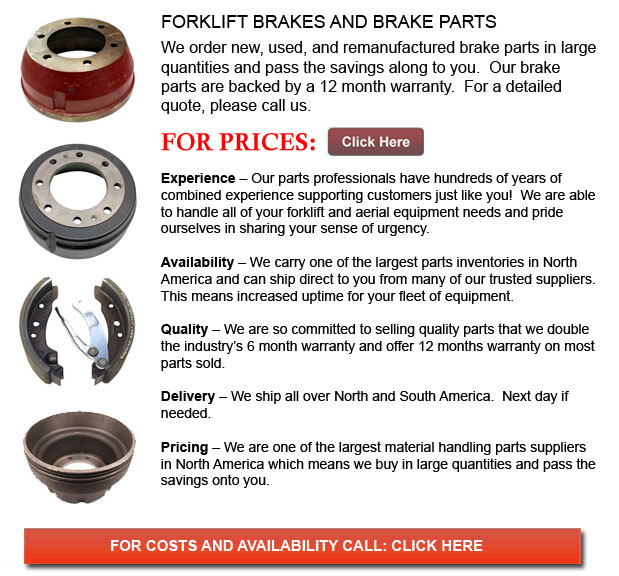
Forklift Brakes - A brake where the friction is provided by a set of brake pads or brake shoes which press against a rotating drum shaped unit called a brake drum. There are a few particular differences between brake drum kinds. A "brake drum" is normally the definition given whenever shoes press on the inner surface of the drum. A "clasp brake" is the term utilized so as to describe when shoes press against the outside of the drum. Another type of brake, called a "band brake" makes use of a flexible band or belt to wrap around the exterior of the drum. If the drum is pinched in between two shoes, it can be referred to as a "pinch brake drum." Like a standard disc brake, these types of brakes are quite rare.
Before 1955, early brake drums needed consistent adjustment periodically in order to compensate for drum and shoe wear. "Low pedal" or long brake pedal travel is the dangerous outcome if adjustments are not done sufficiently. The vehicle can become hazardous and the brakes could become useless whenever low pedal is combined together with brake fade.
There are a variety of Self Adjusting Brake Systems offered, and they can be categorized within two major kinds, RAD and RAI. RAI systems have in-built devices that avoid the systems to recover whenever the brake is overheating. The most recognized RAI makers are Lucas, Bosch, AP and Bendix. The most well-known RAD systems consist of Bendix, Ford recovery systems, Volkswagen, VAG and AP.
Self adjusting brakes usually utilize a tool that engages just if the motor vehicle is being stopped from reverse motion. This stopping method is suitable for use where all wheels make use of brake drums. Nearly all vehicles these days use disc brakes on the front wheels. By working only in reverse it is less possible that the brakes would be adjusted while hot and the brake drums are expanded. If adapted while hot, "dragging brakes" can take place, which increases fuel expenditure and accelerates wear. A ratchet mechanism which becomes engaged as the hand brake is set is one more way the self adjusting brakes may work. This means is just suitable in applications where rear brake drums are utilized. If the emergency or parking brake actuator lever goes over a particular amount of travel, the ratchet improvements an adjuster screw and the brake shoes move in the direction of the drum.
There is a manual adjustment knob located at the base of the drum. It is typically adjusted via a hole on the other side of the wheel and this requires getting underneath the vehicle together with a flathead screwdriver. It is of utmost significance to move the click wheel correctly and adjust each wheel equally. If uneven adjustment occurs, the vehicle can pull to one side during heavy braking. The most efficient method to be able to guarantee this tiresome task is accomplished carefully is to either raise each and every wheel off the ground and hand spin it while measuring how much force it takes and feeling if the shoes are dragging, or give every\each and every one the same amount of clicks utilizing the hand and then perform a road test.
![]() Click to Download the pdf
Click to Download the pdf
Forklift Parts
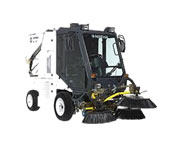
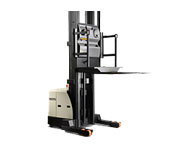
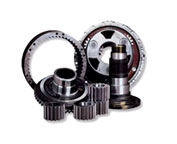
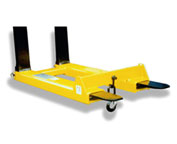
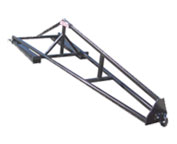
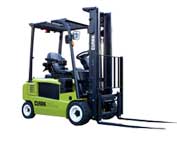
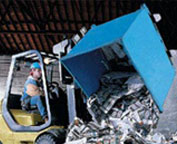
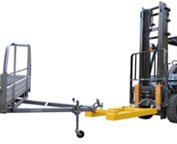
Lift Parts Express
TOLL FREE: 1-888-695-7994
Jackson, Mississippi
forkliftpartsjackson.com
Email Us
About Us


